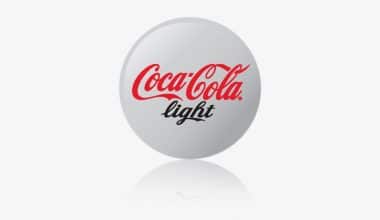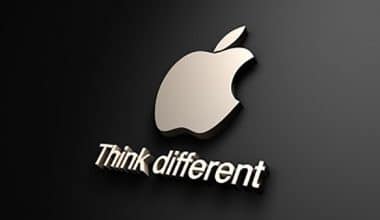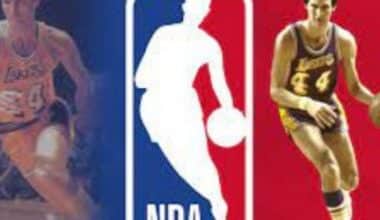Forrest Raffel gained the right to be associated with roast beef sandwiches because he popularized them. Together with his younger brother, Leroy Raffel, he introduced millions of people to Arby’s fast food. The chain and its brown hat insignia first greeted potential customers in Boardman, Ohio, in 1964. After some time had passed, the trademark was retooled. Regardless of the modifications in color, size, and font, Arby’s logo retains its unique flavor and taste. It’s just a plain red hat with the wordmark Arby’s underneath. The most recent version is clean, original, memorable, and adaptable, making it one of the most well-known trademarks in the industry.
The Evolution of Arby’s Logo
The First Logo (1964-1969)
The franchise’s first logo resembled a cowboy hat and underlined what the restaurant was renowned for selling. This logo isn’t well recognized, and few people realize that the iconic red Arby’s emblem used to be a brown western hat. The logo featured a dark brown hat and the words “Arby’s Roast Beef Sandwich.” The text “Is Delicious” was put at the bottom of the hat.
What is the significance of the iconic hat in the logo? As far as we know, the hat shape had no deeper meaning. Westerns were extremely popular in 1964 when the restaurant first opened, and the brand believed it would be a good idea to incorporate them into its logo. The cowboy hat served as the foundation of the design, which was carried over through their redesigns.
The First Logo Change From 1969 to 2012
The first logo was used by the firm for five years before they decided it was time for a redesign. This time, it was altered to the well-known red hat that has since become the franchise’s iconic and characteristic symbol. This logo was a simpler version of the previous one, cleaner, and with less text. The revised logo chose to remove all text from the logo and save their name. The hand-drawn lettering gives the logo the essential aesthetic, as well as a personal touch. This logo was welcoming and recognized the restaurant as a welcoming business that cared about its guests.
2012-2013
The previous logo had been with the company for decades until they thought it was time to give it another try. The brand preserved the core design for the new logo but chose to make it shiny and 3D this time. Although the logo’s outline was retained, the finer features were altered to make it more modern and distinctive. The top’s outline was significantly longer, the logo utilized a lowercase ‘a’ for the name, and the brand employed a new typeface. This year also saw the launch of the brand’s new motto, “Slicing Up Freshness.” While the lettering remained flat, the hat was made in three dimensions to contrast the two.
The Logo Today, 2013-Present
The previous logo was only with the company for a year until it was time for a new one. This time, the design returned to being 2D and looking more like the 1969 emblem that had become a franchise classic. The significant difference was that instead of the earlier features from the late 1960s, the logo was now modified to meet current design trends. The shape was a little wider and shorter than before, and it was now designed to fit social networking platforms. The speech bubble apostrophe that we saw in the previous logo made another appearance.
What Makes Arby’s Logo Unique?
#1. The Logo Is Simple
Arby’s logo is one of the most straightforward in the food sector. Why? This is because it competes with McDonald’s and Pizza Hut. Arby’s logo, like these classic trademarks, has fewer design components. As a result, clients can recognize it in the smallest amount of time.
#2. The Logo Can Be Scaled
The Arby’s logo is adaptable to all screen sizes, from huge to small. It can accommodate billboards, vehicles, business cards, websites, and other forms of marketing. Furthermore, because of its simple design, the logo is adaptable.
#3. The Logo Is Relevant
Arby’s logo incorporates key graphic aspects that are relevant to the food business. The famous hat and its red hue included in the logo design correspond to the food industry. This makes people salivate when they watch the logo in motion.
#4. The Logo Is Timeless
Famous logos last forever. Regardless of the time, these logos fulfill the needs of their individual companies as well as their customers. Arby’s logo, for example, is ageless because it has retained its graphic elements for over 50 years. Its steadiness eventually earned it loyal customers.
#5. The Logo Is Easy to Remember
Most memorable logos contain small design details that show their charm. They are also distinct from their competitors. This category includes Arby’s logo. With this atmosphere, customers may recall it from memory fast and easily.
Elements of the Arby’s Logo Design
Graphic directors can meet their clients’ logo design needs by using shape, form, texture, color, and so on, depending on the brand’s desire. For example, the creative artist behind Arby’s insignia used three graphic components to capture the attention of their customers: text, color, and symbol. Let’s take a look at the factors that give Arby’s a distinct image in the industry.
Arby’s Logo Symbol
A Hat
Chef hats are the most identifiable symbol in the food industry. Nonetheless, Arby’s logo hat was inspired by a cowboy hat. A cowboy hat is an item of popular culture in the American West. It denotes bravery. To be fair, the hat represents safety, cleanliness, and respect. However, it also exudes power, authority, and nobility.
Colors used in the Arby’s Logo
#1. The color red
In the food industry, the color red evokes strong emotions. The rationale is simple: it increases people’s appetite for food. So, like numerous food businesses around the world, Arby’s uses red to promote its brand. The color red denotes love, pleasure, strength, and energy. It also represents movement, confidence, and passion.
#2. The color white
The background of Arby’s logo was white. It complements the trademark’s red outline. It’s a nice color for the food chain. Snow is a color that exudes safety, cleanliness, and humility. White can also express a sense of tenderness, protection, and simplicity.
What Font Is Used in Arby’s Logo?
Arby’s logo has used a variety of fonts over the years. The current Arby’s logo, for example, uses a font close to Sanchez Black. David Hernandez designed this geometric slab serif font. In addition, the font used in the 2012 Arby’s logo is similar to ITC Avant Garde Gothic Pro Bold. Herb Lubalin and Tom Carnase created this geometric san-serif typeface.
Is Arby’s Logo An Oven Mitt?
On March 2, 2003, Arby’s unveiled an animated mascot named Oven Mitt as the brand’s new spokes. Oven Mitt was on the scene long before social media to show audiences how the beef gets prepared at Arby’s.
What Can We Learn From The History Of Arby’s Logo?
When Arby’s attempted to revamp its brand to be cleaner and more modern, it fell short of expectations. After all, Arby’s delivers robust roast beef sandwiches, flavorful fries, and other delectable meals. The fast food restaurant as a whole has a distinct style and personality. So, what can we learn from the history of Arby’s logos?
#1. Maintain your roots.
Arby’s had to return to its original hometown, country-western look in order to regain respect for their emblem. It’s how their brand was built and how people today recognize them.
#2. Small Steps
Arby’s used the same logo for nearly 40 years, yet instead of gradually transitioning to a more current look, they abruptly changed to an entirely different one. People are generally resistant to change, and a big shift might make customers nervous.
#3. Maintain Simplicity
Simple designs are always preferred over complex ones. Arby’s made its logo too intricate by including 3D effects and gradients. The new design balances line thickness and white space so well that it doesn’t require anything extra.
#4. Cohesion is essential.
The 2013 Arby’s logo lacked consistency the most. The views did not entirely match. The hat outline had a 3D effect that made it appear as if you were looking at it from an angle, whilst the text had no effect and appeared as if you were looking at it straight on. This strong writing clashed with the hat’s line weights.
Who Established the Arby’s Food Chain?
Arby’s was founded by Forrest and Leroy Raffel. Leroy was born on March 13, 1927, and Forrest on May 14, 1922. Jacob and Anne Raffel were their parents. Forrest completed Cornell University while Leroy graduated from the University of Pennsylvania.
They took divergent paths, with Forrest concentrating on hotel management and Leroy on finance. The Raffel brothers represented the United States during World War II. Leroy, Forrest’s younger brother, worked for the National Reserve when Forrest was in the Air Force.
In 1964, Forrest and Leroy used their different academic knowledge and skills to establish Arby’s Restaurant. Forrest died in 2008, leaving behind his wife, Gloria, and approximately nine children. In addition, in 1949, Leroy married Shirley Balbot.
Leroy and Shirley are the parents of four children: Kenneth, Janet, James, and Nancy. Both brothers have had successful careers. Leroy has held the positions of president and chairman of various organizations. Raffel Brothers, Inc., York Mahoning Company, and Arby’s, Inc. are a few examples.
Forrest, his senior brother, likewise held numerous jobs before passing away. He was the president of New Castle’s Temple Israel. He also served on the board of the Greater Miami Jewish Federation. Despite the fact that they have retired from active labor, their legacy is having a good impact on the world.
How Did Arby’s Restaurant Begin?
Arby’s is an American fast-food restaurant brand owned by Inspire Brands, headquartered in Sandy Springs, Georgia. It was founded on July 23, 1964, in Boardman, Ohio, by the Raffel brothers. The brand’s signature product is roast beef sandwiches.
In the 1950s, the Raffel brothers purchased their uncle’s consulting firm. Raffel Brothers, Inc. was the company’s name. The company specialized in selling restaurant equipment. It was at a time when McDonald’s, KFC, and other food-related businesses were making inroads.
The brothers kept an eagle eye on the market’s huge growth while running their business. They discovered an opportunity as a result of their spying: an underserved market. Instead of imitating what the major players were doing with hamburgers, they went with roast beef sandwiches.
In 1964, the brothers launched their first restaurant in Boardman, Ohio, with the belief of a revolutionary product. They chose Arby’s name since their preferred name, Big Tex, had already been taken in Akron. Arby’s is a play on the initials of the Raffel Brothers.
To attract premium customers, Arby’s sold roast beef sandwiches for 69 cents, which was 54 cents more than hamburgers. Regardless of the price, customers flocked to the new fast-food restaurant. They began with roast beef sandwiches, soft drinks, and potato chips. It was a big hit!
Arby’s capitalized on this validation by issuing its first license in 1965. This permit marked the start of the second chain in Akron, Ohio. These success stories inspire the brothers to grow quickly. Arby’s had over 300 locations in 40 states by the end of the 1960s.
The Evolution
While expansion leads to success, the latter is dependent on cash. Initially, the brothers funded their chains with equity and bank loans. However, they planned to attract significant finance by going public in 1970. Unfortunately, due to SEC’s own challenges, this ambitious endeavor did not proceed.
With no cash, they laid off some employees, ceased royalty payments, and filed for chapter 11 bankruptcy in November 1970. Following this terrible occurrence, the Raffels attempted every measures possible to restore Arby’s enviable standing. With approximately 500 outlets, it became lucrative once more.
Following their IPO lessons, the family sold its eateries to Royal Crown Cola in 1976 for $18 million. However, they did not immediately step down. Instead, they steered the food chain to unprecedented levels of income and profit. The brothers finally retired in 1979, having worked at 800 Arby’s restaurants.
Arby’s now sells a wider variety of dishes in addition to its roast beef sandwiches. It has also spread into a number of countries throughout the world. Under the direction of Paul Brown, Arby’s has grown to become the second-largest food chain in the United States, after only Subway.
What Is the Size of Arby’s Food Chain?
Arby’s is one of America’s most successful and inventive quick-delivery services, with a global reach. The food business has expanded from a single store in Boardman, Ohio, to over 3,400 sites globally.
Though the founders developed a niche with their trademark product—roast beef sandwiches—the company is more likely to sell a variety of good foods. For the fiscal year 2020, these delectable products generated around $3.8 billion in sales revenue.
Arby’s continual high revenue is not accidental. Instead, the company has used the abilities, knowledge, and experiences of its exceptional people to achieve record sales volumes throughout the years. Arby’s current workforce ranges between 74,000 and 80,000 employees.
Yes, you read that correctly. This is the amazing quantity of brains that make the brand the world’s food paradise. Remember the workers’ dedication whenever you see a red hat.
Is Arby’s Only In America?
Arby’s restaurant is also available in other parts of the world.
Which State Is Arby’s Most Popular In?
Arby’s is most popular in Ohio, with about 278 stores.
Why Is Arby’s So Good?
Arby’s roast beef is produced with 100% genuine beef, which is undoubtedly the main reason it’s so delicious. There is no filler, no artificial protein, and no liquid meat.
Some Lessons To Learn From Arby’s History
#1. Concentrate on what you do best: identify your competitive advantage.
Arby’s was founded in 1964 by two brothers, Forrest and Leroy Raffel, who sold only roast beef sandwiches, potato chips, and soft drinks at their initial location. (Many people believe that the name “Arby’s” is derived from the initials R.B. for “roast beef,” but the name was chosen to symbolize “Raffel Brothers.” The proprietors envisioned their business competing without relying on hamburgers.
Most people associate Arby’s with roast beef sandwiches. It has long been a component of the company’s identity. Arby’s menu has expanded in numerous areas throughout the years. Milkshakes, salads, deli sandwiches, and chicken filet sandwiches are all on the menu these days.
Is it feasible that Arby’s has oversold its products? One of the most common blunders in the restaurant industry is presenting an excessively large menu; after all, if a restaurant offers dozens upon dozens of menu items, chances are that not everything on the menu will be good. Every menu item requires money to maintain – stocking the ingredients, training workers to prepare it, and marketing the menu items to clients.
Perhaps Arby’s should return to its roots and focus on the roast beef sandwiches that first drew customers in. Arby’s, after all, cannot be “all things to all people.” Is Arby’s going to be the first place customers think of when they want a deli sandwich, or will they go to Subway? Can Arby’s compete in the chicken sandwich market with Chik-Fil-A? It is sometimes necessary to decide what your company will not provide. It is impossible to compete in every product category and niche market. Determine where you have a significant competitive edge and devote your efforts accordingly.
#2. Understand your customers.
Arby’s recently launched a new marketing campaign dubbed “Good Mood Food,” stressing the restaurant’s wholesome food selection and advertising a new premium Angus beef sandwich (to compete with Hardee’s and McDonald’s Angus burgers).
According to QSR Magazine, Arby’s is targeting its new “Good Mood Food” promotion on “Balance Seekers,” a crucial customer demographic identified in customer research. These clients do not eat fast food every day, but they require the convenience to help them manage their hectic schedules. Arby’s wants to provide these consumers with an experience that includes satisfying, great cuisine and nutritious ingredients that they won’t feel bad about consuming.
This is a solid start for Arby’s; by conducting customer research, they are able to create a relevant offer for their customers. Arby’s is attempting to meet a specific need found through market research. This is a hopeful beginning, especially in an era when many businesses appear to invest in marketing initiatives without first speaking with their customers.
#3. Increase your prices and become a “premium offering.”
Rising food prices are one of the most significant concerns confronting the fast food business. Wendy’s/anticipates Arby’s 5-6% increase in food expenses in 2011, making it difficult to sustain profit margins in a competitive market like fast food.
Arby’s intends to weather the storm by implementing “strategic pricing hikes” on specific menu items, and they anticipate that customers will be prepared to pay more because Arby’s is now supplying higher quality, fresher ingredients. It remains to be seen whether this strategy will be successful, but it is a better concept than simply competing on price. Only the largest corporations can win at that game, and selling on price is not the greatest long-term solution, even for the Wal-Marts of the world.
What can your company do to promote itself as deserving of a greater price? How much leeway do you have in raising pricing without alienating your customers? Answering these questions will put your firm (and Arby’s) in a better position to attract more profitable customers – or a higher selling price for your company. Most businesses are unsure of their competitive advantages and which, if any, are important to their buyers. Organizations that understand this are the ones who can sustain revenues in the long run.
Some Facts You Didn’t Know About Arby’s
#1. It Was Not Named After Anyone
Many people believe that the restaurant Arby’s was named after a man named Arby. Despite the fact that this is a reasonable assumption, the restaurant was named after its two founders. Arby’s was created in the 1960s by two brothers, Leroy and Forrest Raffel. Because the initial name they wanted to use for the restaurant, “Big Tex,” had already been taken, they chose a different one. They went with “RB,” which stands for Raffel Brothers.
#2. They aired a 13-hour advertisement
The restaurant wanted to demonstrate that their Smokehouse Brisket sandwich was smoked for a full 13 hours, so they aired a commercial depicting it. They filmed the process and then broadcast it so that viewers could witness for themselves that the brisket was cooked for the whole 13 hours.
#3. Only potato cakes were available at Arby’s.
You might find yourself purchasing a large order of curly flames the next time you visit Arby’s, but there was a time when you could only get their potato cakes. Until 1970, the restaurant’s main side dish was potato cakes rather than French fries. Later that year, in 1988, they debuted the curly fries that we now know and love as the go-to side item for Arby meals.
#4. Arby’s is present in five countries.
Arby’s is not only present in practically every state in the United States, but also in four other countries. If you’re traveling abroad, you can get some Arby’s in Canada, Qatar, the United Arab Emirates, and Turkey.
#5. Arby’s is not for everyone.
The truth is that Arby’s and their roast beef sandwiches are either loved or despised by the public. Those who appreciate roast beef are fans of the company since it offers so many different ways to deliver it in a variety of sandwich styles. Roast beef sandwiches are not for everyone. If you do your research, you will discover that some consumers love a good old-fashioned hamburger and would rather pay for one than eat a free roast beef masterpiece.
#6. In 1965, Arby’s sold its first franchises.
Arby’s was not widely known until the 1970s. In 1964, they opened a single restaurant in Boardman, Ohio. They began selling franchises the next year. By the 1970s, the business was growing at a rate of 50 Arby’s franchises per year. This is how Arby’s saw exponential expansion and spread to all 50 states.
#7. The original sandwiches were nothing like the ones we know today.
In 1971, the recipe for their iconic roast beef was altered into a more intensively processed one that is still in use today. This virtually ensures that the initial Arby’s roast beef sandwiches sold did not have the same taste or texture as those offered today. They had to be decent, though. Arby’s quickly became a popular fast-food restaurant, and they’ve been steadily gaining ground ever since.
#8. The current logo was not created until 1975.
Here’s another interesting tidbit about Arby’s. They’ve changed a lot in the decades since the restaurant first opened. The brand’s present logo was not even conceived and implemented until 1975. The food is also unique. Not only is the roast beef more professionally processed, but they also added shakes, Arby’s Sauce, and Horsey Sauce throughout the 1970s, as well as the iconic Beef n’ Cheddar, Arby-Q sandwich, Jamocha Shakes, and curly fries.
#9. Arby’s has expanded internationally.
The Arby’s fast-food franchise has grown to over 3,400 restaurant locations in the United States and Canada, and it has also extended beyond North America’s borders. Arby’s now has locations in Qatar, Turkey, and the United Arab Emirates. The well-known American chain has now expanded to other parts of the world. In fact, Qatar has two Arby’s establishments.
#10. Wendy’s owns a portion of Arby’s.
This is just another interesting detail about Arby’s that we discovered. Wendy’s fast-food outlets are owned by Triarc, the parent company of Arby’s. Triarc acquired Wendy’s and renamed itself Wendy’s/Group Arby’s Inc. This occurred in 2008, and the parent company has subsequently sold 81.5 percent of its investment in Arby’s change to the Roark Capital Group. The sale occurred in 2011, at which time the parent company changed its name to Wendy’s and kept roughly 20% ownership in Arby’s, making it a part owner of the franchise.
#11. Arby’s was the first to express concern for its customers’ health.
This may seem strange for a fast-food restaurant known for its deep-fried curly fries, but it’s real. Arby’s was the first of the major fast-food businesses to prohibit cigarette and cigar smoking at all of its locations. Although this is now typical practice, there were restaurants that would give ashtrays to their visitors who smoked cigarettes from the 1960s through the 1980s. In fact, prior to the ban’s implementation in 1994, quite a few clients would smoke inside the restaurant, endangering others with secondhand smoke. Arby’s pioneered the restaurant ban on public smoking in order to provide its visitors with a clean and healthful environment in which to enjoy their meals.
#12. Neither Rhode Island nor Vermont has an Arby’s.
These two states on the East Coast are the only ones in the country that do not have an Arby’s within their borders. If you live in one of these states and don’t feel quite comfortable about the situation, you might want to think about investing in a franchise and starting your own business.
How has the Arby’s logo been updated over the years?
The Arby’s logo has undergone several updates over the years, including changes in font, color, and overall design. The most recent update, in 2017, modernized the logo to a more simplified design.
Are there any restrictions on using the Arby’s logo internationally?
The use of the Arby’s logo may be subject to certain restrictions depending on the country. It is important to check with the local laws and regulations before using the logo, and to obtain permission from the brand owner if necessary.
Are there any specific dimensions that should be used when using the Arby’s logo?
When using the Arby’s logo, it is important to follow the guidelines provided by the brand, which may include specific dimensions for the logo to be used. This is to ensure that the logo is always legible and recognizable.
How do I get in touch with Arby’s for any questions about the logo?
To get in touch with Arby’s for any questions about the logo, you can contact the brand directly through their website or by phone. They may also have a designated team or contact for logo usage inquiries.
Are there any official guidelines for using the Arby’s logo in advertising?
The brand may have official guidelines for using the Arby’s logo in advertising. It is important to follow these guidelines to ensure that the logo is used correctly and that the brand’s image is protected.
Can I make my own version of the Arby’s logo?
It is not allowed to make your own version of the Arby’s logo without permission from the brand. The Arby’s logo is protected under trademark and copyright laws, and any unauthorized usage can lead to legal action.
In Conclusion
Among the most famous logos of all time, Arby’s logo genuinely accentuates and affects the fast food industry. With its legendary roast beef sandwiches, Arby’s has built a name for itself despite being less famous than its competitors. It has grown significantly in popularity since the restaurant was founded in 1964, and we’ve seen not only the growth of the company but also the evolution of its logo.
In addition to being crucial to the restaurant’s success, the visual identity of the brand has evolved into an iconic masterpiece. Franchise fans may be surprised to learn that the brand’s debut logo looked nothing like it does today. In the first design, the color palette was different, but the core concept remained. Throughout the years, the logo has evolved into the iconic artwork that we now associate with the restaurant.
Related Articles
- Best business to start with little money right now (+ all you need to start)
- RESTAURANT MARKETING: What You Should Know and Strategies
- ADVERTISING CAMPAIGN: Definition and Best 20 Campaign Examples and Ideas.
- RESTAURANT MANAGEMENT SYSTEM: Guide to Effective Restaurant Management






